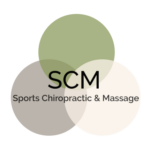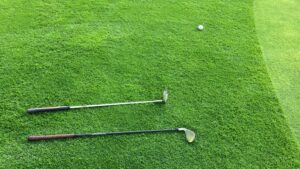While many people are familiar with the names of these conditions, there is less widespread understanding about how they differ. Both tennis elbow (lateral epicondylitis) and golfer’s elbow (medial epicondylitis) are injuries to the tendons attaching your forearm muscles to the bone at your elbow. The “epicondyle” part of epicondylitis refers to the bony bumps or protrusions at your elbow.
The anatomical structures involved in tennis elbow and golfer’s elbow are very similar and the symptoms are also similar, but they appear on opposite sides of the elbow and arm.
Golfer's Elbow vs Tennis Elbow
Lateral Epicondylitis (Tennis Elbow)
Common symptoms of tennis elbow include:
- Pain that radiates from the outside of your elbow and down your forearm
- Tenderness on the outside of your elbow
- Weakness in your forearm or a weak grip
- Pain when you grip things, twist something or, if you play tennis, especially with backhand strokes
Medial Epicondylitis (Golfer’s Elbow)
Golfer’s elbow symptoms are similar, but occur on the inside of your arm and include:
- Pain and tenderness on the inside of your elbow
- Pain that radiates down your arm from the inside of your elbow
- Weakness in your hand or wrist
- Numbness or tingling in your ring and little fingers
- Pain when you grip or twist things
- Pain when you flex your wrist
Both tennis elbow and golfer’s elbow symptoms usually start gradually and get worse over time.
Causes of Golfer’s Elbow and Tennis Elbow
Both conditions are types of tendonitis, or inflammation of a tendon, and both are commonly caused by overuse. This may be due to excessive force on a regular basis (like hitting a tennis or golf ball) or due to other repetitive activities that involve the forearm muscles. The tendons over time can progress from inflammation, to partial thickness tears, and finally full thickness tears. Painters, plumbers, and carpenters or anyone performing repetitive gripping and lifting activities are also prone to both tennis and golfer’s elbow.
Treatment of Tennis Elbow and Golfer’s Elbow
Fortunately, most cases of tennis elbow and golfer’s elbow respond well to conservative treatments. Dr. Smith incorporates home stretching routines, muscle scraping, microcurrent point stimulation, myofascial release techniques, deep tissue massage, and extremity adjustments to address both painful syndromes.
Surgery is usually not necessary, although complete recovery can take weeks or even months, depending on the severity of the condition. As with other forms of tendonitis, one of the most important aspect of treatment is to reduce the amount of strain on the affected tendons. This may include resting the arm, using a brace or athletic taping, wrist splints, and once healed, correcting improper technique/form to prevent the recurrence of the injury.
For more information, please call us at 415-496-0992 or book an appointment online.


